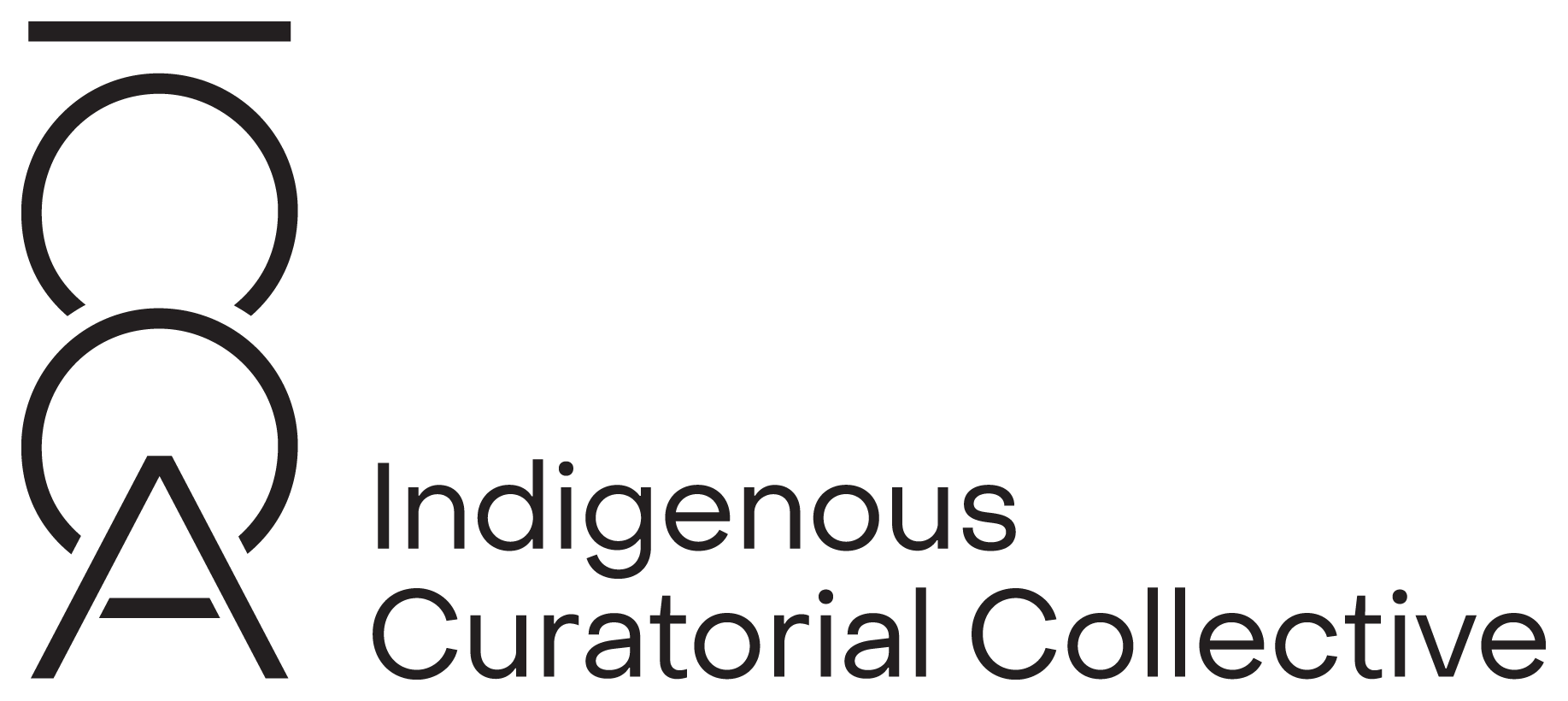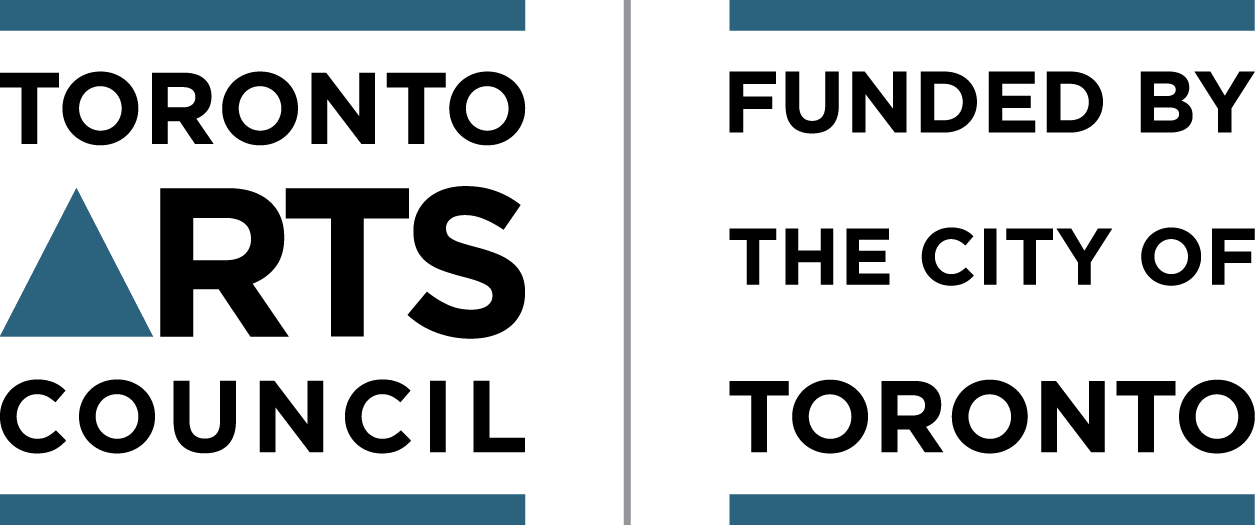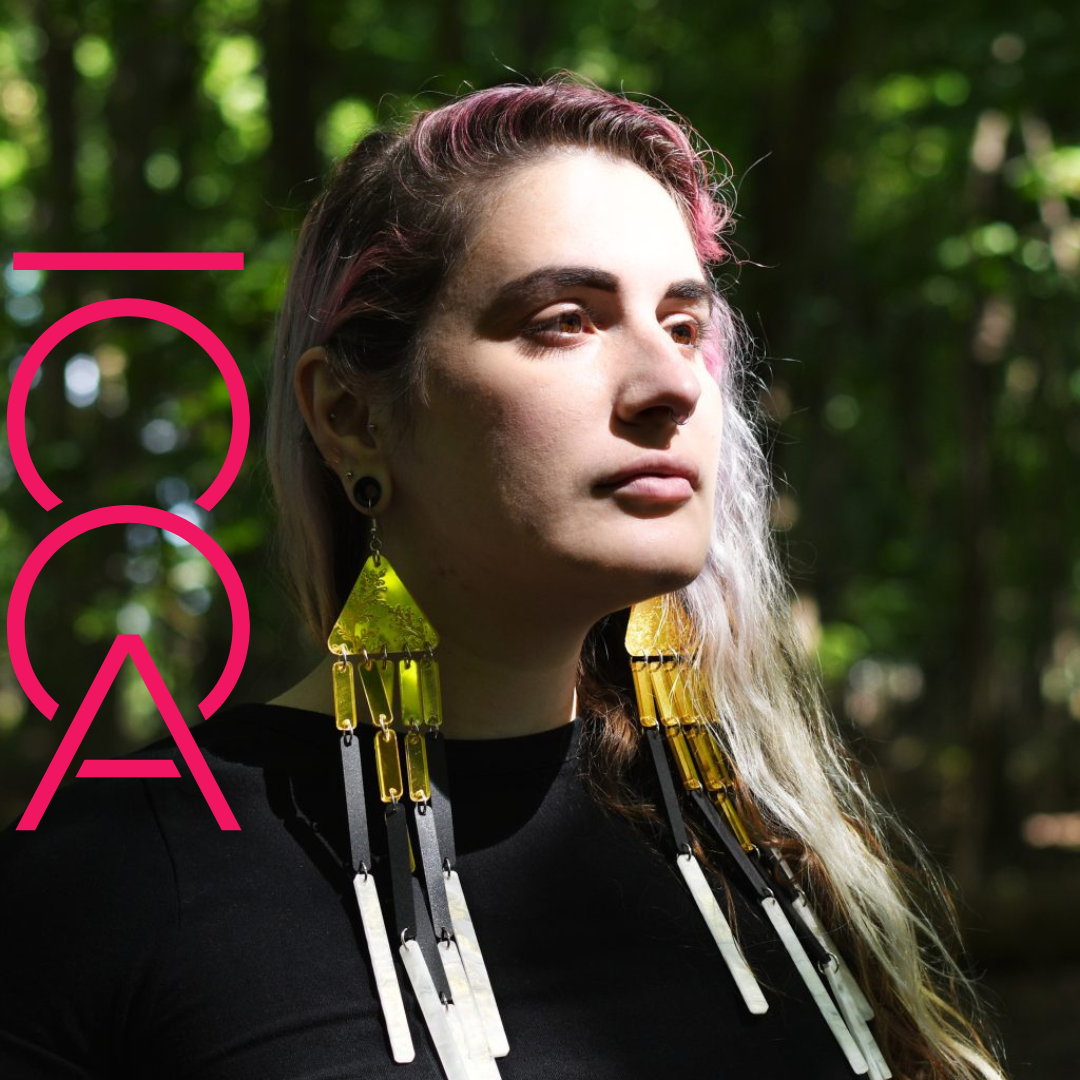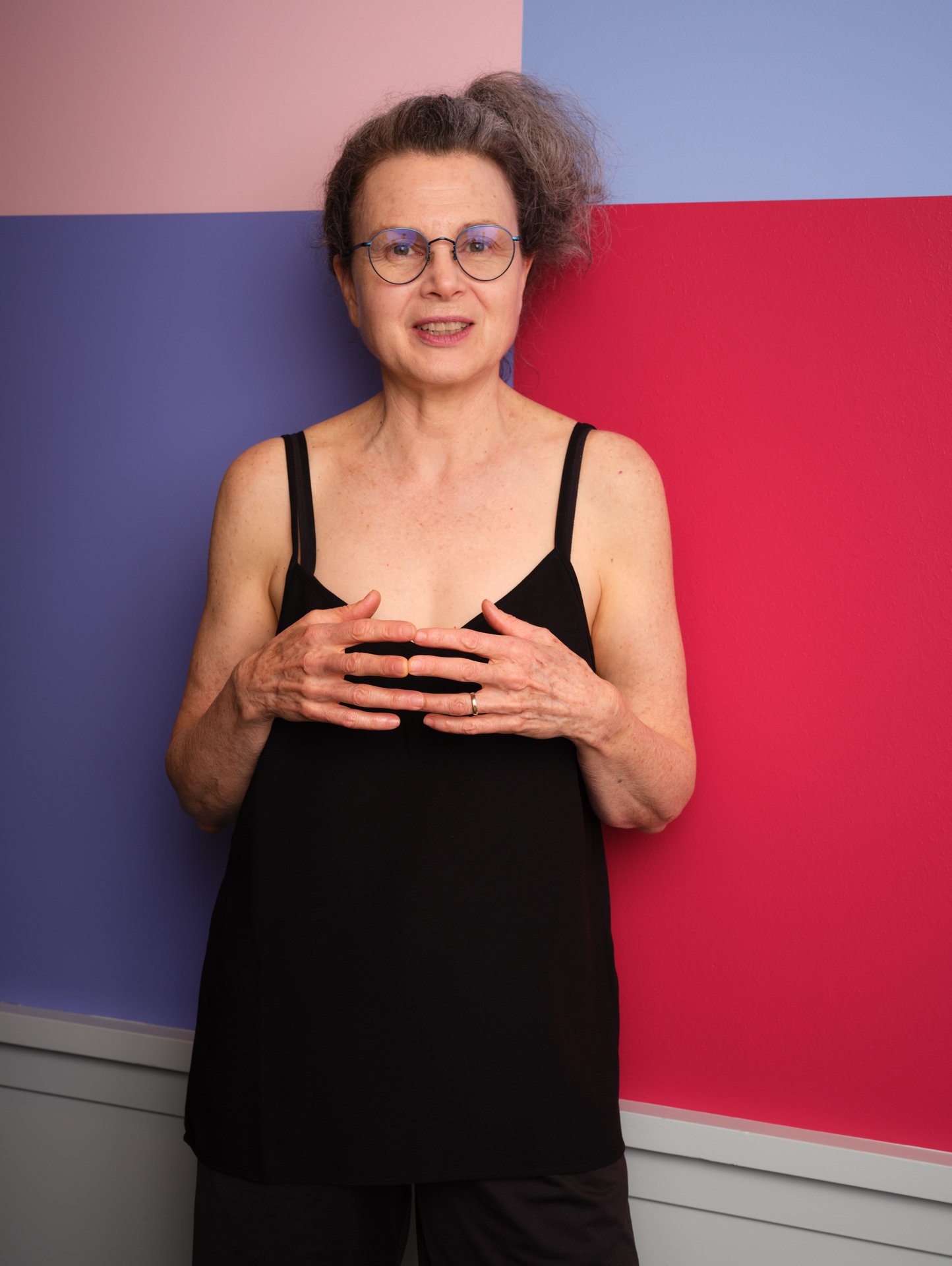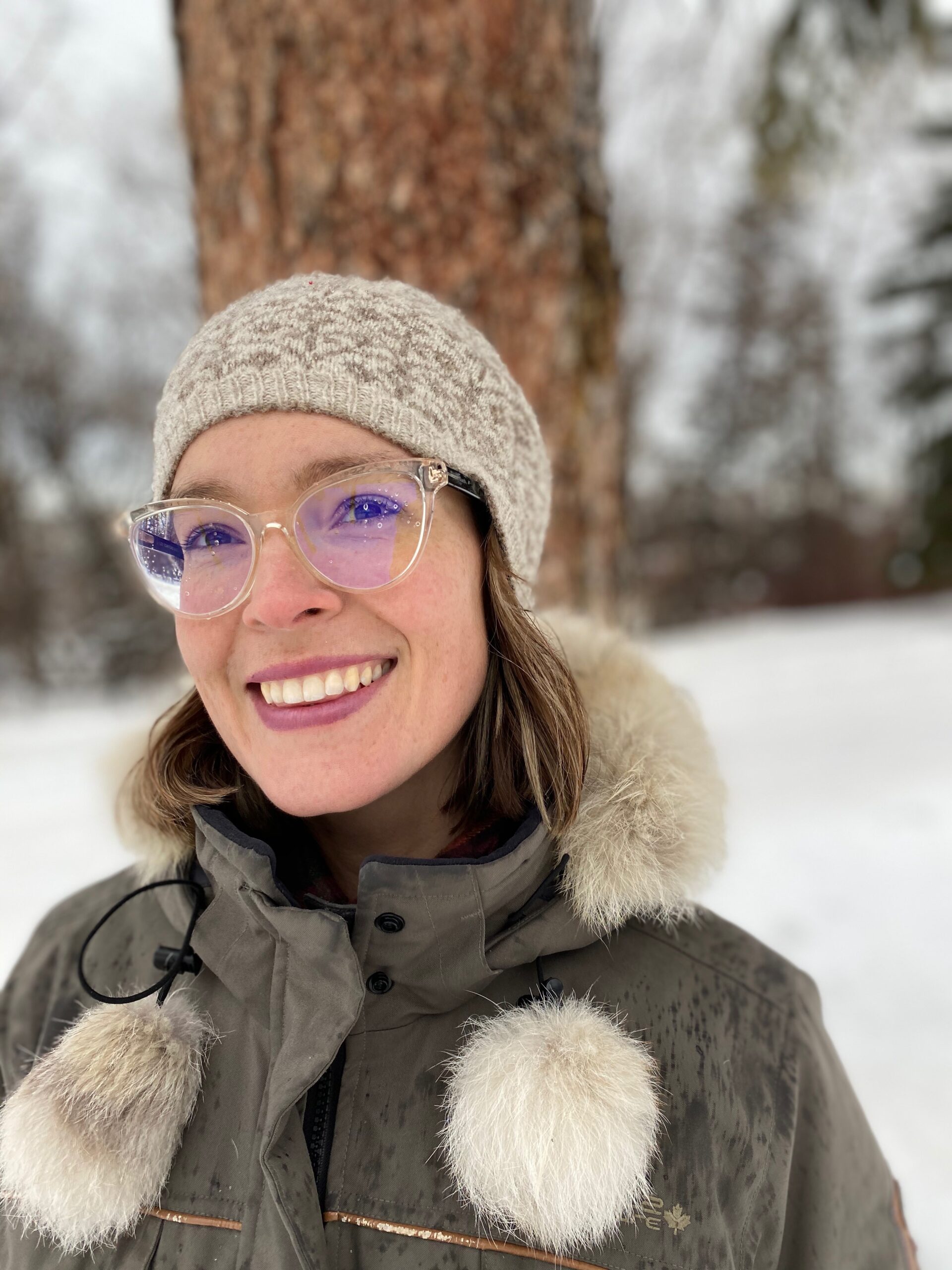The Way Ahead: Surveying the Curatorial Landscape (Colloquium Panel and Presentation Overview)
By Barry Ace
Urban Shaman Gallery March 17th – 19th, 2006 Winnipeg, Manitoba March 17, 2006
On March 17th, the participants, members and invited guests arrived in Winnipeg for the Aboriginal Curatorial Collective (ACC/CCA) colloquium entitled, The Way Ahead – Survey the Curatorial Landscape. The colloquium got underway at the official opening and vernissage for Robert Houle’s exhibition entitled Nomenclature – (Apache Bombs and Helicopters). The opening of Robert Houle’s exhibition was a perfect opportunity for ACC/CCA participants to view this important solo exhibition, meet the artist and get to know one another prior to the panel discussions and presentations. The opening was extremely well attended with more than one hundred guests present. Steve Loft introduced the artist and thanked Robert Houle for agreeing to share the exhibition the ACC/CCA, and to offer up the gallery space for the ACC/CCA to meet, surrounded by his work, for the next two days. The Robert’s generosity and great sacrifice in agreeing to close the gallery for two days, after the official opening, clearly reveals his kindness and generousity, but reaffirms his commitment to the Aboriginal curatorial and critical community’s need to galvanize and contribute to the development of our important curatorial and critical.
March 18, 2006
Events got underway with registration beginning at 8:00am. Upon arrival, each participant and speaker received a conference package with printed material and information about the host institution Urban Shaman Gallery; information on the City of Winnipeg, biographies on the invited speakers, and the final agenda for the ACC/CCA colloquium. The staff of Urban Shaman Gallery prepared the gallery space with chairs, tables and electronic data projection equipment for the presenters. The attendance was in excess of sixty participants and remained constant over the duration of the colloquium. The gallery space was an excellent venue to host the colloquium and conducive to the event.
Steve Loft and Barry Ace welcomed the participants and both stressed the importance the two-day event and acknowledge the hard work of all involved to making the colloquium happen, including Scott Stephens, K.C. Adams and of course, artist Robert Houle. Barry Ace invited senior artist Marjorie Beaucage to offer an opening prayer, smudge ceremony and important words of advice to steer the two day event. Marjorie spoke about the importance of the work that lay ahead, and how each person must approach the work with an open mind, goodness of heart that would unequivocally advance the collective needs of the important work ahead. After Marjorie concluded, Barry Ace spoke about the historic meeting that was about to take place, and thanked the invited guests for agreeing to participate in the colloquium.
The colloquium got underway with the first panel discussion entitled the Past Present: Mapping the Contemporary. This session provided an historical and contemporary overview of the contributions made by Aboriginal curators (Tom Hill, curator) with regards to the development of Aboriginal arts policy and the emergence of significant cultural programming within many arts institutions. The session also included a history of the formation and development the Society of Canadian Artists of Native Ancestry(SCANA) (Dr. Alfred Young Man), which has contributed to many important developments for contemporary Aboriginal arts and curatorial practice. Prior to the first presentation by Tom Hill, Ace spoke about the importance of honouring, and how the ACC/CCA should honour and respect those individuals in our curatorial and critical community who have made significant contributions to the advancement of our community. Ace also noted that we should not only honour an individual for their contributions, but that the ACC/CCA bestow and honourary membership in our organization. The first person the ACC/CCA chose to honour was Tom Hill, a Seneca curator, artist, educator, administrator and writer of Six Nations Reserve, Brantford, Ontario.
Ace spoke about the important contributions and great sacrifices Tom Hill has made to the Aboriginal curatorial and critical communities. Ace stressed the point that Hill has been honoured numerous times by the non-Aboriginal community for his contributions to the advancement of Aboriginal art, including his induction into the prestigious Governor General of Canada Visual Arts Community in 2005. But, Tom Hill had never been honoured by his Aboriginal curatorial and critical community. Ace noted that when Hill began working in the field of Aboriginal arts, there were no Aboriginal mentors to guide him. Tom Hill was the first Aboriginal curator in Canada, beginning his work in the mid 1960s. Working on the Expo 67 exhibit on the Indian Pavilion, as manager of the Department of Indian Affairs and Northern Development (DAIND) educational and cultural affairs program the lead to the formation of the most important collection of Canadian Aboriginal art in the world administered under the Indian Art Centre, and later as the Director of the Woodland Cultural Centre in Brantford, Ontario, Tom Hill has contributed immensely. Tom sacrificed his own art practice for the advancement of Aboriginal visual arts community, working tirelessly on National Film Board productions such as the Paradox of Norval Morrisseau and the Colours of Pride that featured Alan Sapp, Daphne Odjig, Alex Janvier and Norval Morrisseau. Tom’s writing contributions are immense and his curatorial contributions are equally impressive, including the seminal exhibition Beyond History in the 1990s that literally changed how the world would forever view contemporary Aboriginal art.
At the conclusion of the honouring, Barry Ace presented to Tom Hill, on behalf of the Aboriginal Curatorial Collective, an eagle feather for his unwavering and dedicated work towards the advancement of contemporary Aboriginal art in Canada. Ace then asked anyone present to stand up and offer thanks to Tom. Everyone who spoke eloquently thanked Tom for his influence on them and for his tenacity and dedication to the curatorial and critical communities. Tom was deeply moved by the honouring and proceeded to “step up to the plate” once again, with a powerful presentation on the early years of contemporary Aboriginal art, including an unseen glimpse into his own practice as a visual artist. Tom offered the participants words of encouragement to continue their own work in the curatorial and critical disciplines and to work together to make change in the arts writ large. Tom spoke on the development of Aboriginal arts policy in Canada, and the emergence of significant cultural programming within many arts institutions, including his tenure at the Indian Art Centre, Department of Indian Affairs and Northern Development. He spoke of the need for cutting edge exhibits dealing with tough, sensitive issues, and the unequivocal need for our art history, writings and exhibitions to be out there. As an example, Tom spoke about how British and French histories have often been deemed “more” important than Aboriginal history. Tom stressed that we can’t let that happen. Tom presented a slide show highlighting the 1974 exhibition at Royal Ontario Museum in Toronto entitled “Canadian Indian Art, 74”. He offered invaluable insights into his own involvement in the arts for the last 30 years.
Tom concluded his presentation with an Iroquoian song translated as goodbye, although Tom presaged the song with the explanation that it wasn’t really goodbye, but more in accordance and meaning with moving forward. The room was completely silenced by this rare and heartfelt song by Tom, and everyone was emotionally moved and most were brought to tears. At the conclusion, Tom received a standing ovation from the Aboriginal Curatorial Collective, invited speakers and conference delegates.
Dr. Alfred Young Man presented next on the history of the Society of Canadian Artists of Native Ancestry (SCANA). Dr. Young Man acknowledged the important and pivotal role SCANA has played in the development of contemporary Aboriginal art in Canada and to the academic discourse both domestically and internationally since 1983. SCANA hosted four symposiums throughout its history, including special meetings, art exhibitions and specific lobbying to make advancements in exhibition, acquisition and art policy in institutions such as the National Gallery of Canada and other provincial art institutions including the MacKenzie Art Gallery. SCANA has been instrumental in instituting change for Aboriginal art and artists, SCANA has played an unequivocal role in the preservation and protection of the National Collection of Contemporary Canadian Aboriginal Art at the Department of Indian Affairs and Northern Development (DIAND). From its inception in the 1980s at the know legendary KSAN Symposium, SCANA played an integral and essential role in the history of Canadian Aboriginal art. For the past several years, SCANA has remained inactive, due to federal government cut-backs, but Dr. Young Man noted the need for SCANA to re-emerge during this time of curatorial and critical community development. Dr. Young Man also noted the relevance of SCANA, and how it could play an integral advocacy role and an important alliance member to the emerging renaissance of Aboriginal curatorial and critical communities. Furthermore, with the possibility of the emergence of a National Gallery of Aboriginal Art looming on the horizon, SCANA’s historic role as advocates and protectors of DIAND’s historic fine art collection, the role of SCANA could not be more prevalent and timely. Young Man noted that there is a concern for “What will happen to the collection?” and that SCANA could still play an active role. Young Man stated that publishing from a Native perspective is the last bastion to tackle, to “complete the circle.” He noted that it is not enough to just show work, but our community needs curators, writers, and more publications – from aboriginal people. A lunch time screening of the KSAN – National Native Indian Artists Symposium (1983) documentary was offered that documented this important symposium where SCANA was first formed.
The second session of the morning was moderated by Cathy Mattes and entitled Here and Now: Locating Outer Spaces. In this session, participants identified and spoke about artist-run centres, art collectives and organizations whose mandates focus on Aboriginal artistic expression. Tribe Inc. (Lori Blondeau, Director), and Urban Shaman Gallery (Steve Loft, Director) discussed the journey and experiences their organizations have encountered within the context of a local, provincial and national milieu. Ukjese Van Kampen, SYANA presented on the history and contemporary role of SYANA in the North.
Lori Blondeau, Director, spoke about the history of Tribe Inc., and the innovative approach and challenges to operating an art organization without a gallery space since 1994. These early shows such as hosting Nation to Nation’s Native Love was presented with no gallery space, but successfully negotiated the lack of space via the concept of strategic partnerships with institutions who had exhibition space. Notable exhibitions in Tribe’s history include Dana Claxton’s Buffalo Bone China and James Luna’s performance work. Tribe has also exhibited Shelley Niro, Edward Poitras, Jeffrey Thomas, MaryAnn Barkhouse, and Michael Belmore to mention a few. One important aspect of their exhibition programming is to bring the artist in for the exhibition and for public talks. Lori explained that Tribe adapts itself to the Aboriginal arts community by providing the artist with the appropriate venue and space for their work by negotiating and collaborating with local, regional, provincial and national artist-run centres, galleries and other art collectives for space and exhibition opportunities. Currently situated in the Bessborough Hotel in downtown Saskatoon, Tribe continues to produce exhibitions, performance, film and video and symposiums that promote and contribute to the contemporary art practice and discourse. Although considerations have arisen throughout Tribe’s history as to whether or not there should be a permanent exhibition space, Tribe remains true to their original mandate.
Tribe’s unique place as an outer space has pushed the boundaries for both permanent art institutional spaces by encourage them to make space for Aboriginal artists and for provincial and federal funding agencies who had to reassess their criteria and policies as they relate to the concept of artist-run centres and art organizations. Lori noted that this has not be an easy undertaking, and it still remains difficult, as some funding agencies continue to infer that Tribe move toward a permanent venue as an artist-run centre. Tribe continues to be unique by pushing boundaries, and recent collaborations with other collectives such as the tripartite symposium on Defining Indian with the South Asian Visual Arts Collective (SAVAC) continue to provide new and innovative opportunities for the curatorial and critical communities. Tribe continues to offer work placement opportunities for Aboriginal youth within their administrative offices, and they continue to provide professional development for the new and emerging Aboriginal artistic community.
Steve Loft spoke about the emergence of Urban Shaman Gallery on the Winnipeg art scene. From its humble beings in a cold, dark and dank basement space on McDermitt Avenue, where grant applications were written by the founding members and board of directors wearing gloves to keep warm, to their well organized strategic planning and eventual move up to a large second-floor gallery loft is the seminal story of the emergence of an Aboriginal artist-run centre. Urban Shaman Gallery now has a large professional principle gallery with two smaller galleries, one being a community gallery to provide local talent and organizations to feature works from their communities. Loft noted that artist-run-centres are a tremendous opportunity for experimentation, and that the new technology offers great potential. Urban Shaman is also developing and preparing to install a state-of-the-art video and mult-media gallery that will be able to accommodate the most hi-tech artists working in this new and emerging genre. As well, the gallery has permanent office space and a dedicated staff of Aboriginal professionals that are well trained and well versed in exhibition installation, communications, promotion and preparatory work. Urban Shaman has a professional board of directors who are committed and dedicated to the advancement of the Aboriginal artistic, curatorial and critical communities. Urban Shaman has featured an impressive roster of Aboriginal artists, both provincially and nationally, including artists such as Robert Houle, Jeffrey Thomas and Lita Fontaine to mention a few who represent diversity of artistic disciplines. As well, Urban Shaman has produced numerous exhibition catalogues and have hosted national symposiums, such as the Aboriginal Curatorial Collective colloquium. One innovative development is the New Media curatorial position currently underway with a grant from the Aboriginal Curatorial Residency Program of the Canada Council for the Arts. Ahasiw Maskegon-Iskwew is the current new media curator who has developed a host of on-line events and is currently active with the cyber Conundrum web space featured on Urban Shaman’s website.
As well, Steve Loft, Ahasiw Maskegon-Iskwew and Dana Claxton contributed to the collaborative publication of Transference, Tradition and Technology with Walter Phillips Gallery and the Art Gallery of Hamilton and Indigenous Media Arts Group. This important publication is a collaborative initiative that explores Aboriginal visual and digital culture. Loft concluded that the future is extremely promising for Urban Shaman Gallery, and they are unequivocally leaving a mark on the contemporary Aboriginal artistic, curatorial and critical communities with their futuristic thinking and forays into cutting edge practices.
Ukjese Van Kampen provided an important overview of the history and emergence of the Society of Yukon Artists of Native Ancestry (SYANA) on the Aboriginal arts scene. Formed as a territorial sister organization of the Society of Native Artists of Native Ancestry (SCANA), SYANA was formed in 1989. The last of the remaining territorial and provincial Aboriginal artist organizations, SYANA continues to serve the Yukon Aboriginal artists as a non-profit society that promotes a greater knowledge and appreciation of Aboriginal art and artists, works on the development of Aboriginal arts, and encourages Aboriginal and public participation in the arts. It achieves this by organizing a variety of art courses and programs such as marketing and portfolio development. SYANA also provides ideas and names of possible performers or artists for events and commissions, and helps Aboriginal artists access training and market opportunities for their work. As well, SYANA regularly showcases Yukon Aboriginal art and performances. Ukjese noted that SYANA continues to help increase awareness of Aboriginal art that has residual impact by increasing the self-esteem of individual artists and First Nation communities in the Yukon. SYANA also provides education in the schools and acts as a referral service for Yukon Aboriginal artists. Numerous individual artists have benefited from SYANA’s support and services, and they have worked diligently towards changing the perceived low regard for the Aboriginal arts in the North and continue to challenge the barriers of the recognition of Aboriginal artists. The philosophy of the board of SYANA is to support the artist and encourage a face to face approach to working with funding representatives to create a positive and close working relationship. SYANA also believes fostering and developing a good working relationship with the Aboriginal community they are serving, as a result this involvement of its membership in running the organization provides everyone with a comprehensive understanding of the organization and better knowledge regarding access to opportunities in their respective artistic discipline. SYANA continues to be active and are currently looking towards the opening of a major Aboriginal cultural centre to be built after a long and arduous treaty negotiation process of a local First Nation. In addition to continued work on regular artistic programs and workshops, SYANA is also developing an Aboriginal Theatre Company and establishing an arts program at Yukon College. The future remains optimistic for SYANA, and they remain one of Canada’s oldest and longstanding Aboriginal arts organization.
The third panel Present Future: Contemporary Collections and Institutions was moderated by William Kingfisher. This session included presentations by institutions that collect and exhibit contemporary Aboriginal art. The Indian and Inuit Art Centres of Indian and Northern Affairs Canada (INAC) (Barry Ace, former Acting Chief and Chief Curator) is one of the last cultural programs remaining in INAC. As INAC moves towards a process of devolution to Indian and Inuit governments, the future of these important historical programs, fine art collections and resources is of paramount significance to the Aboriginal curatorial and artistic communities. Ace noted that the future of these important historical programs, fine art collections and resources are of paramount significance to the Aboriginal curatorial, artistic and critical communities. Being the most comprehensive collection in the world, it is the only collection that was developed by Indian curators and managers. As a result, Ace noted, that this is our art history in Canada, and it is a history that has yet to be written. He further noted that the collection consisting of approximately 3,500 works of art has been collected since the 1960s, but gifts to the department date back to the 1880s. In 1980, former curator (Museum of Man – now the Canadian Museum of Civilization) was contract to conduct and expensive evaluation of the Indian Art Centre program and collection. Ace read from the Report and Recommendations (August 1980) that the collection, at the time, was evaluated at $1 million dollars (CAN), and Houle noted that since its inception, there has been “no curatorial attention”, “no adequate storage”, “no climate control”, and “no departmental policy” on the future of the program and collection. Ace cited that since this 1980 report, INAC has failed to adopt and implement any of the recommendations, save the inventory and documentation. Works are still out on loan throughout the country, the majority of which are subject to unacceptable conditions and the vulnerability of these works has resulted in the theft of important works of art. Ace stated that a long term goal of the ACC/CCA is to work towards the development of a centre of excellence that may even be attached to a high profile national Aboriginal gallery or art centre. This could provide an important training facility for emerging Aboriginal curators to receive accredited training and experience. The INAC collection could potentially be an important permanent collection for such an institution. But, Ace notes, that should INAC ever consider transferring the entire art programs and collections, it is imperative the collection be transferred “in toto”, including all works, inventory software, equipment, library and slide resources, exhibition catalogues, artists files, historical photographs and resources and all archived departmental files pertaining to the history of the development of these programs and collection. One important aspect to such a transfer is a negotiated transfer of FTEs (Person Years – Salary dollars) and Operating Budget that could potential sunset over a determined period of time. Since INAC has a fiduciary responsibility for Indians, one would assume, INAC also has a fiduciary responsibility to look out for the best interests of our cultural patrimony. Ace concluded by noting that Ms. Viviane Gray, Chief, Indian and Inuit Art Centres had accepted an invitation to address the Aboriginal curatorial and critical community at the colloquium, but cancelled at the last minute without explanation. The ACC/CCA continued to seek a forum with INAC, but to date the Department is not willing to discuss the program with our membership.
The newly completed First Peoples Hall, First Peoples Gallery and contemporary role of the Canadian Museum of Civilization was addressed by Lee-Ann Martin, Curator of Contemporary Aboriginal art. Lee-Ann provided a visual presentation of the history and development of Aboriginal art from its transition from the Museum of Man to the Canadian Museum of Civilization, since the early 1970s. Lee-Ann noted that important commissions were initiated by then director, Dr. Taylor, who commissioned Bill Reid in 1973 and later, Daphne Odjig‘s seminal work, Indian in Transition. The CMC’s other commissions included Sun Mask, Ksan, 1978, and Alex Janvier‘s Four Seasons, 1979. Lee-Ann noted that very little has been collected by the CMC between the 1980s -1990s. As well, the only major touring exhibiiton’s were in 1989 Shadow of the Sun, Indigena – First Peoples Perspectives on 500 years, and Reservation X towards the latter part of the 1990s. The CMC’s work has been focused for the past several years on completing the First Peoples Hall, and the only new work purchased by the CMC were works by Shelley Niro and Nadia Myre. Currently, Lee-Ann is working on several exhibition projects and she is also working and negotiating with senior management on a strategy to begin purchasing new works for the Aboriginal art collection.
Greg Hill, Associate Curator of Contemporary Art with the National Gallery of Canada (NGC) spoke about the Aboriginal projects and exhibitions at the National Gallery of Canada and he discussed the future place of contemporary Aboriginal art. Hill noted his awareness of the sometimes critical position one is placed in as a curator at the NGC. He noted that many have referred to the NGC as non-inclusive, but countered that the 1990 Mandate of the NGC clearly articulates that it is “here for all of us”. Although Hill noted that the history of Aboriginal art at the NGC has been a sporadic and sparce one, he notes that there has been positive advancements, and that we should celebrate these changes. For example, the Art of This Land on-going and changing exhibition which integrates Aboriginal art and material culture to dialogue with Canadian art history, the NGC touring program for exhibitions to the region, and the hiring of two Aboriginal people for positions in the National Gallery of Canada (Greg Hill and Linda Grussani). Of particular importance is the willingness of the NGC to host its very first solo exhibition by an Indian artist in the exhibition Norval Morrisseau – Shaman Artist. Hill presented a slide presentation of works selected for the exhibition, and noted some of the highlights and challenges in mounting a major solo exhibition at the National Gallery of Canada. Hill remains optimistic and encouraged the participants to get involved by sending in their catalogues and articles to the NGC Library. Hill also noted that the NGC has been involved in acquiring new works for their collection, including recent purchases of major works by Norval Morrisseau and Alan Michelson.
The proposal for a National Gallery of Aboriginal Art (NGAA) as proposed by the Bill Reid Memorial Foundation (BRMF) proved to be a lively and controversial panel discussion. BRMF National Advisory council members included (Karen C. Adams, Marcia Crosby, Tom Hill, Louise Profeit-Leblanc, Robert Houle and Dr. Alfred Young Man). The history relating to the development of a NGAA and the veiled political and private sector advocacy, back-door dealings, and misuse of the Aboriginal Advisory Committee brought to light a critical and shocking revelation that the NGAA was a fait accompli before the invitation and participation of the Aboriginal Advisory Committee. Aboriginal Advisory Committee felt that it had in fact been used and mislead to validate work and predetermined decisions that had already taken place without their knowledge or consent. Furthermore, the issuing of a final report by the BRMF validated the objectives of the CEOs and BRMF and partners under the guise of Aboriginal community consultation that only served to further exacerbate the controversy surrounding this disturbing development. The lack of national consultation and the decision to situate it in Vancouver, British Columbia was also a concern brought forth by the panel.
The Advisory Committee members in attendance met in camera to discuss the reparation of letter to the BRMF addressing their concerns. The letter was to be prepared by K.C. Adams and sent to the appropriate parties concerned. The day’s sessions concluded after this intense and lively debate.
The evening events reconvened at 6:00pm at Urban Shaman Gallery for the official book launch and signing of the publication Transference, Tradition, Technology, edited by Dana Claxton, Melanie Townsend, and Steven Loft for the Walter Phillips Gallery Editions in association with Indigenous Media Art Group and Art Gallery of Hamilton. Also the ACC/CCA launched its new website projected in the gallery space by a data projector. The participants had an opportunity to explore the features of the new website designed by NYC designer Patrick Tafoya http://www.aboriginalcuratorialcollective.org. Of particular interest was the extensive bibliographic database of writing by Aboriginal and non-Aboriginal writers and curators. Francois Dione of Artexte in Montreal noted that he was going to include our website bibliographic resource in Artext’s next newsletter. Urban Shaman Gallery also hosted a special evening event with Cree artist Kent Monkman. Kent provided a in-depth slide presentation chronicling his work. His presentation was followed by a question and answer period, and a special film screening of his latest film entitled “The Group of Seven and A-Half Inches”.
 Barry Ace is a practicing multidisciplinary artist currently living in Ottawa. He is a debendaagzijig (citizen) of M’Chigeeng First Nation, Odawa Mnis (Manitoulin Island), Ontario, Canada. Ace’s work responds to the impact of the digital age and how it exponentially transforms and infuses Anishinaabeg culture (and other global cultures) with new technologies and new ways of communicating. His work attempts to harness and bridge the precipice between historical and contemporary knowledge, art, and power, while maintaining a distinct Anishinaabeg aesthetic connecting generations.
Barry Ace is a practicing multidisciplinary artist currently living in Ottawa. He is a debendaagzijig (citizen) of M’Chigeeng First Nation, Odawa Mnis (Manitoulin Island), Ontario, Canada. Ace’s work responds to the impact of the digital age and how it exponentially transforms and infuses Anishinaabeg culture (and other global cultures) with new technologies and new ways of communicating. His work attempts to harness and bridge the precipice between historical and contemporary knowledge, art, and power, while maintaining a distinct Anishinaabeg aesthetic connecting generations.

